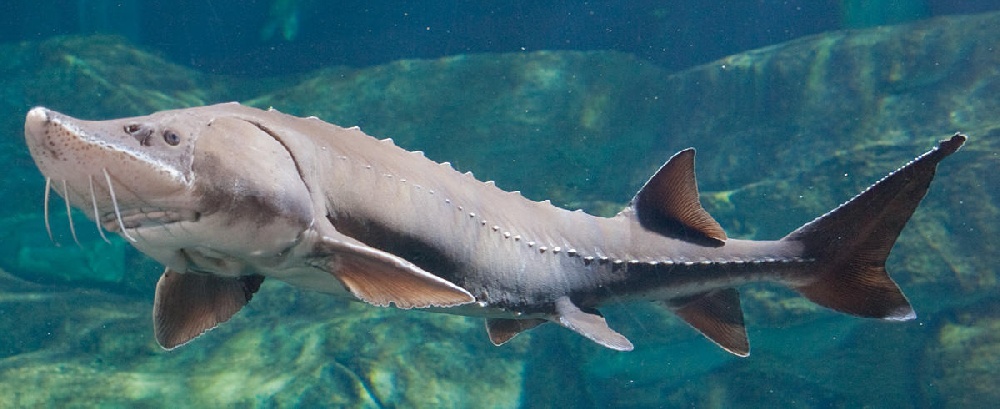Lake Sturgeon Details
Photos


Lake Sturgeon Description
http://www.landbigfish.com/fish/fish.cfm?ID=112
The lake sturgeon (Acipenser fulvescens) is a North American temperate freshwater fish, one of about 20 species of sturgeon. Like other sturgeons, this species is an evolutionarily ancient bottomfeeder with a partly cartilaginous skeleton and skin bearing rows of bony plates. The fish uses its elongated, spadelike snout to stir up the sand and silt on the beds of rivers and lakes while feeding. Barbels surrounding the mouth, usually four, are purely a sensory organ to help it find its food. The lake sturgeon can grow to a mass of over 100 kilograms (200 lb) and a length of over 3 meters (9 ft) over its long lifetime. It can reach well over 100 years of age and usually does not reach sexual maturity until its third decade of life.
The lake sturgeon has taste buds on and around its barbels near its rubbery, prehensile lips. It extends its lips to vacuum up soft live food which it swallows whole due to its lack of teeth. Its diet consists of insect larvae, worms (including leeches), small fish and other small, primarily metazoan organisms it finds in the mud.
This sturgeon is a source of caviar and isinglass and its oil was once used to fuel steamboats. It is also a valuable gourmet food fish. Like most sturgeons, the lake sturgeon is rare now, and is protected in many areas. It has been overharvested for its various products, and has succumbed to pollution and loss of migratory waterways. It is vulnerable to population declines through overfishing due to its extremely slow reproductive cycle; most individuals caught before twenty years of age have never bred and females spawn only once every four or five years. The specific harvesting of breeding females for their roe is also damaging to population size. The lake sturgeon was once a very abundant species in the Great Lakes, so common it was caught and discarded by fishermen seeking other species, but now it is rarely seen. Few individuals ever reach the extreme old age or large size that those of previous generations often did.
Today, limited sturgeon fishing seasons are permitted in only a few areas including some locations in Minnesota, Wisconsin and Michigan. Fishing for sturgeon is allowed on Black Lake in Michigan, for example, but the fishery is limited to five total fish taken each year, each over 36 inches (910 mm) and taken through the ice with spears. 25 anglers are chosen by lottery each day and given a flag to raise when they have caught a fish. When five flags have been raised the season is closed for the year. Seasons have lasted as little as a few hours.
Anglers in Minnesota have the opportunity to harvest one lake sturgeon per calendar year between 45 and 50 inches on the Rainy River and Lake of the Woods on the Canadian border. The early season runs from April 24 to May 7 each year with the late season running from July 1 to September 30. Anglers must have a valid Minnesota fishing license and purchase a sturgeon tag to harvest a lake sturgeon.
There is also an annual sturgeon spearing season on Lake Winnebago in Wisconsin. It has changed from a 16 day season in the past to a season with a marked quota, however, the season can still run for the full 16 days. If 90–99% of the quota is reached on any day the season is over at 12:30 pm the following day. If 100% (or more) of the quota is reached the Wisconsin Department of Natural Resources can enable an emergency stoppage rule which would end spearing at 12:30 pm the day the quota is reached. Before the season structure was changed to protect this valuable resource spearers could fish from midnight on opening day to 11:59 pm on the 16th day of the season. Now spearers start at 6:30 am and have to stop for the day at 12:30 pm. During those six hours the fishermen look down a hole that is cut into the ice with chainsaws. The hole cannot exceed 48 sq ft (4.5 m2). In order to be harvested the sturgeon must be at least 36 inches.